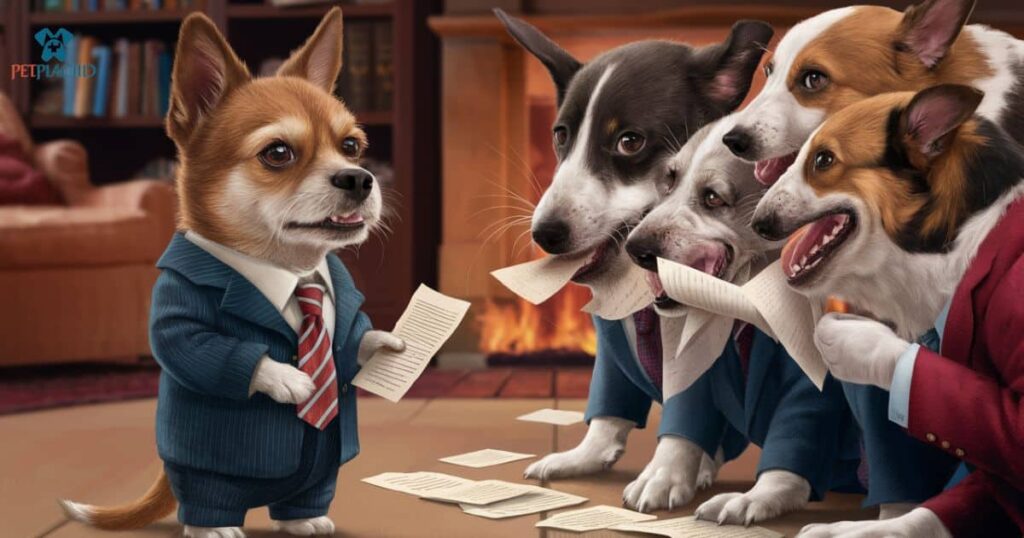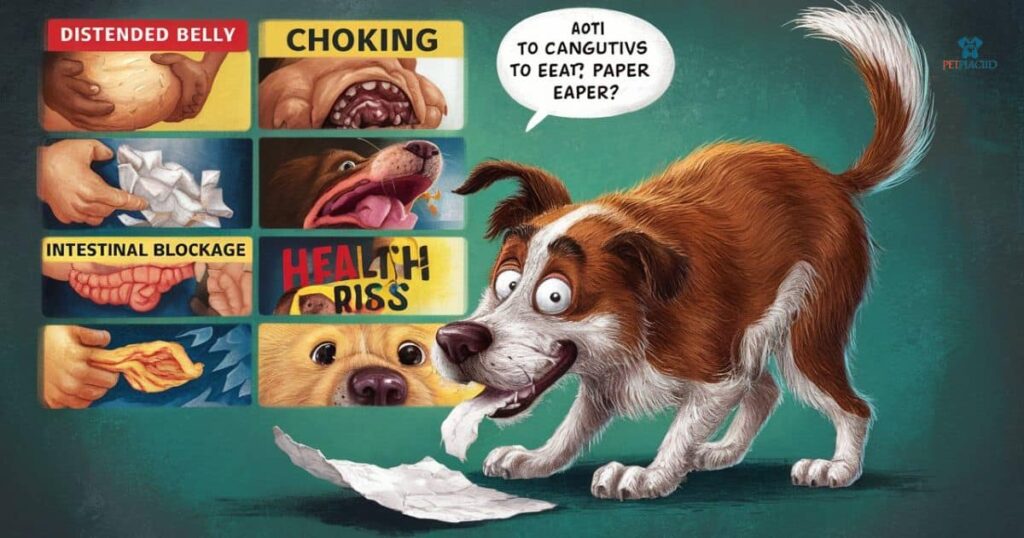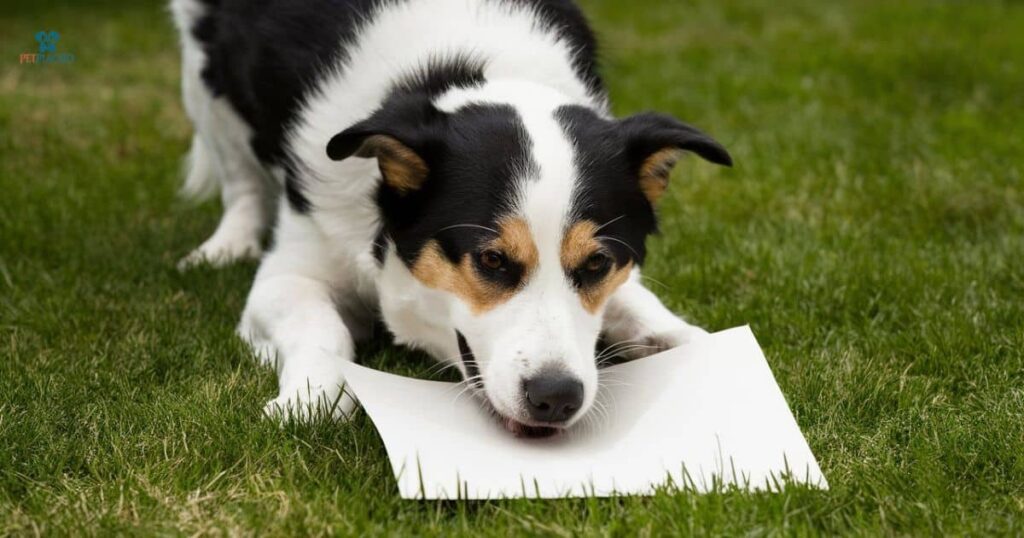If your furry friend has recently developed a strange habit of chowing down on paper items around the house, you’re probably wondering what’s going on. Paper eating, also known as pica, is a peculiar behavior that can stem from various underlying causes in dogs. Understanding the potential reasons behind this unusual appetite can help you address the issue effectively and ensure your pup’s well-being.
What Is Pica in Dogs?
Pica is a condition characterized by the consumption of non-food items that have no nutritional value. In dogs, pica can manifest in different forms, such as eating paper, cloth, rocks, dirt, or other inedible objects. While it’s not uncommon for puppies to explore their surroundings by chewing or mouthing objects, persistent pica in adult dogs can signify an underlying problem that requires attention.
Potential Reasons for Paper Eating in Dogs
Several factors can contribute to a dog’s sudden desire to eat paper. Here are some of the most common causes:
- Nutritional Deficiencies Dogs may develop pica as a result of nutritional imbalances or deficiencies in their diet. Certain vitamins and minerals, such as iron, zinc, or vitamin B, play crucial roles in a dog’s overall health. If your pup’s diet lacks these essential nutrients, they may attempt to compensate by consuming non-food items like paper.
- Gastrointestinal Problems Digestive issues, such as inflammatory bowel disease, pancreatitis, or intestinal parasites, can lead to pica behavior in dogs. These conditions can cause discomfort, nausea, or a lack of appetite, prompting dogs to seek relief by ingesting paper or other non-food items.
- Boredom or Attention-Seeking Dogs are intelligent and social creatures that thrive on mental stimulation and interaction with their owners. If they feel bored or neglected, they may engage in destructive behaviors, such as chewing on paper, as a way to relieve stress or seek attention.
- Anxiety or Stress Just like humans, dogs can experience anxiety and stress due to various factors, including changes in their environment, separation from their owners, or traumatic experiences. Pica behavior may be a coping mechanism for dogs to deal with these emotional challenges.
- Behavioral Problems In some cases, paper eating can be a manifestation of underlying behavioral issues, such as compulsive disorders or obsessive-compulsive behaviors. These conditions may stem from genetics, early socialization, or traumatic experiences, and they often require professional intervention and training.
- Medical Conditions Certain medical conditions, such as diabetes, thyroid disorders, or brain tumors, can also contribute to pica behavior in dogs. These conditions can affect a dog’s appetite, perception of hunger, or cognitive abilities, leading them to consume non-food items.
- Curiosity or Exploration Puppies, in particular, may exhibit paper-eating behavior out of curiosity or a desire to explore their surroundings. This is often a transient phase as they learn what is appropriate to chew and what is not.
Addressing Paper Eating in Dogs

If your dog has suddenly started eating paper, it’s essential to take prompt action to address the underlying cause and prevent potential health complications. Here are some steps you can take:
- Consult with Your Veterinarian The first and most important step is to schedule an appointment with your veterinarian. They can perform a physical examination, run diagnostic tests, and identify any potential medical or nutritional issues contributing to your dog’s pica behavior. Your vet may recommend dietary changes, supplements, or medications to address the root cause.
- Provide Environmental Enrichment If boredom or lack of mental stimulation is the culprit, increasing your dog’s physical and mental exercise can help alleviate the issue. Provide interactive toys, food puzzles, and engage in regular playtime and training sessions to keep your pup’s mind engaged and prevent destructive behaviors.
- Manage Anxiety and Stress If your dog’s paper eating is linked to anxiety or stress, identify and address the underlying triggers. This may involve making changes to their environment, providing calming supplements or pheromone diffusers, or seeking professional help from an animal behaviorist or trainer.
- Implement Behavior Modification Techniques In cases of compulsive or obsessive behaviors, working with a professional dog trainer or behaviorist can be beneficial. They can provide guidance on behavior modification techniques, such as positive reinforcement training, to help curb the unwanted behavior.
- Provide Appropriate Chew Toys Offering your dog appropriate chew toys can help redirect their chewing urges and satisfy their natural desire to gnaw. Look for durable toys specifically designed for heavy chewers, and rotate them regularly to keep your pup interested.
- Manage Environmental Access While addressing the underlying cause, it’s crucial to limit your dog’s access to paper and other non-food items they may be tempted to ingest. Keep areas with potential hazards, such as home offices or craft rooms, off-limits, and ensure that any paper or inedible objects are securely stored away.
Related Post: Why Does My Dog Look At Me When He Eats ?
Potential Health Risks of Paper Eating

While the occasional piece of paper may not cause immediate harm, persistent paper eating can lead to various health complications for your dog. Here are some potential risks to be aware of:
- Gastrointestinal Obstruction Paper can accumulate in your dog’s digestive system, potentially causing a blockage or obstruction. This can be a life-threatening condition that may require surgical intervention to remove the blockage.
- Intestinal Perforation Sharp or abrasive paper edges can tear or puncture your dog’s intestinal lining, leading to internal bleeding, peritonitis (inflammation of the abdominal lining), or sepsis (a potentially life-threatening infection).
- Toxicity Some types of paper, such as those containing ink, dyes, or chemicals, can be toxic if ingested in large quantities. This can lead to poisoning or other adverse reactions.
- Dental Damage Chewing on paper can wear down your dog’s teeth over time, potentially causing dental problems or infections.
- Nutrient Deficiencies If your dog consumes large amounts of paper, it can interfere with their ability to absorb essential nutrients from their regular diet, leading to nutritional deficiencies and potential health issues.
By addressing the underlying cause of your dog’s paper eating behavior and taking preventive measures, you can help protect your furry friend from these potential health risks and ensure their overall well-being.
Conclusion
If your dog has suddenly started eating paper, it’s essential to take proactive steps to address this unusual behavior. Consulting with your veterinarian, providing environmental enrichment, managing stress and anxiety, implementing behavior modification techniques, and limiting access to potential hazards can all contribute to resolving the issue. Remember, persistent paper eating can lead to various health risks, so addressing the root cause promptly is crucial for your dog’s well-being.







